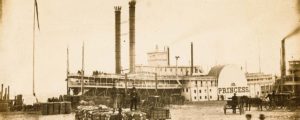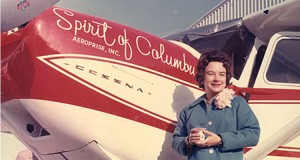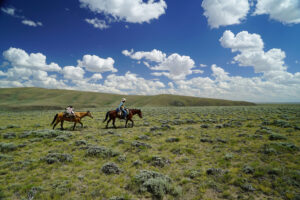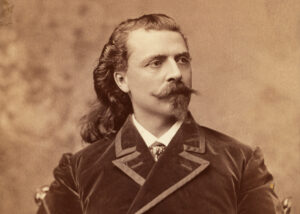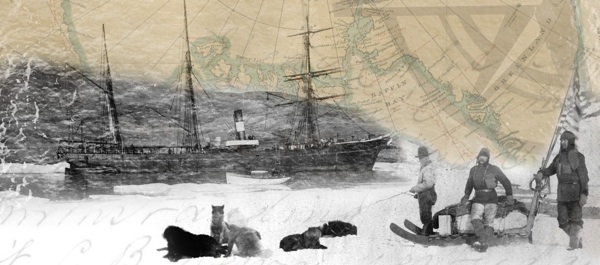
The highly polished history series from PBS affiliate WGBH, American Experience, is beginning 2011 with a number of programs featuring events of American history that have seen little or no airtime on television before. These fascinating tales reveal much about people and events that left their mark on the nation and even the world: Dinosaur Wars, Panama Canal—Gateway to the American Century, Triangle Fire. Now, The Greely Expedition, which premieres Monday night, January 31, at 9:00 pm ET on PBS, delivers a story of adventure and promise that devolves into loss and despair—but it is a story worth telling, an episode worth watching.
To relate this story, American Experience turned to veteran filmmaker Rob Rapley, who last year did the well-received biography Wyatt Earp for the series. Rapley approaches a difficult subject with a subtle finesse that allows the story to unfold without interference from flashy style and visual clutter. It is the story of a determined man with an ambitious, promising idea that ultimately ends in tragedy and scandal.
Adolphus Greely was born to poverty in a family ground up by the unforgiving mills of Massachusetts. He saw the military as his way out of the cycle. He joined the army, fought in the Civil War and gained a commission. After the war, he reenlisted and performed well in his duties, but he was searching for something that would give him a lasting place in the annals of his time.
That opportunity came when the international scientific community saw the exploration of the Polar Regions as the key to understanding the climate of the world. Different nations were assigned areas on the Arctic Circle to set up a total of fourteen stations for scientific study. The northernmost outpost was assigned to the United States.
In the later part of the 19th century the federal government was just beginning to develop specialized scientific agencies, so the U. S. Army was charged with manning the station. But the Army was much more concerned with its outposts on the western frontier and its role in protecting westward expansion than in examining ice. Enter Greely, who saw the chance for status and fame. He worked tirelessly to gain support for the expedition—which he would lead, of course. Congress finally appropriated the funds for the expedition with a start date in the summer of 1881.
Twenty-four soldiers volunteered to join the expedition, most of them hardy cavalrymen who lacked knowledge of scientific matters and of the sea. But their fortitude and character were what would ultimately count most in this unusual assignment.
Greely’s expedition left the northernmost North American port—St. John’s, Newfoundland—on July 7, 1881. The ship, carrying the expedition’s crew and 350 tons of supplies, headed for Lady Franklin Bay, a virtually unknown piece of the Arctic ice shelf across from the northern reaches of Greenland. They were lucky to get through the ice-clogged channel at Cape Sabine, which in the past had discouraged explorers and whalers alike. In the most far-reaching decision of the expedition, the ship pulled up anchor and left after unloading was completed at Lady Franklin Bay. One of the expedition’s organizers maintained that the presence of a ship would make the men soft and unwilling to explore inland—an idea that Greely supported.
The men built a sturdy compound they named Fort Conger and then set about making the round-the-clock metrological measurements that would become the recorded story of the expedition. Many of the men, including Greely, kept personal diaries as well.
A party from the expedition also accomplished an important goal of the U.S. Government that had less to do with scientific research than with bragging rights—they reached a geographical point that was farther north in the Arctic than the place where the British had established a world polar record two centuries earlier.
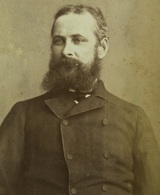 Greely did not endear himself to the men with his martinet approach to the administration of the expedition, even ordering the men to do menial tasks for the officers. His leadership was tempered by a duty-bound first sergeant named David Brainard and by George Rice, a worldly photographer, who kept the camp in balance. Things were sustainable at Fort Conger, until the resupply ship failed to show up on the mission’s first anniversary. By the time the second anniversary came and the men were to leave, the fact that no ship was in sight became the topic of—not exactly panic, but serious concern.
Greely did not endear himself to the men with his martinet approach to the administration of the expedition, even ordering the men to do menial tasks for the officers. His leadership was tempered by a duty-bound first sergeant named David Brainard and by George Rice, a worldly photographer, who kept the camp in balance. Things were sustainable at Fort Conger, until the resupply ship failed to show up on the mission’s first anniversary. By the time the second anniversary came and the men were to leave, the fact that no ship was in sight became the topic of—not exactly panic, but serious concern.
Modern researchers reason that if the men had stayed at Fort Conger, they probably would have been just fine. But Greely decided to follow the army’s orders to make their way to Cape Sabine; a rescue party was to be waiting in the area there. At Fort Conger, the expedition hadn’t lost a man. That would change as the group ventured to the southwest, first on a small steamship, and when the fuel gave out, by using an ice flow to continue on.
Greely came apart on the trip. He spent most of the time inside his sleeping bag, but others took control and the men finally accomplished a landing on barren Ellesmere Island at Cape Sabine, where they set up a makeshift shelter they called Camp Clay. The third winter was extremely hard; there was little food and a near-mutiny. But Greely was able to regain his senses and control of the men, even though death was creeping into the expedition.
Meanwhile, two rescue attempts had been made to reach Fort Conger but were turned back by impassible ice in the channel. The second relief expedition’s commander even lost a ship trying. When all others had given up hope or interest in the fate of Greely his young wife, Henrietta, kept the effort alive. She pestered the Army and Congress to no avail. Then she took the plight of the soldiers public and into the press, which finally stirred the Army into action. A new rescue effort reached the camp on Ellesmere Island, but the expedition was in bad shape. Only six men, including Greely, survived. A doctor with the rescue effort said these six would not have lasted another 48 hours.
When they arrived back in the U. S. it was hardly a hero’s welcome. But the scientific journals were intact, and Greely looked forward to what these journals and the fact of having set a new northern-most polar record might bring to him and to the memory of those who had perished on the frozen Arctic ice.
Then a darker side of the expedition emerged: rescuers described finding signs of cannibalism in their examination of the dead left at Camp Clay. Greely was never able to overcome the disgrace of these accusations; they even negated the value of the scientific work the expedition had done. However, these historical measurements are of great value to modern scientists studying the changes in the Polar Regions and the effect on Earth’s environment.
What makes this documentary more than merely the recounting of a sad and grisly story is the method of how it presents its lessons in human behavior. In a photograph, the expedition’s members’ outlook appears crisp and breezy the first time the image is shown, but as it is reintroduced at various points in the program it takes on a haunting air. The visual symbolism is suggested, not shouted.
The same holds true of familiar American Experience devices that Rapley expertly shuffles and deals: still photographs that the camera moves through; hints of historic objects without a human in sight; modern views of places visited; the simple music. The focus stays on the men and their interactions—that aura of Victorian duty and valor that we have difficulty understanding in the modern age. Even the on-camera authorities seem in awe of the range of emotions these men shared with each other under the most trying of circumstances. It is virtually impossible not to get choked up over the tragedy and sadness that befell these Arctic pioneers.
There are cases where some visuals hang on just the tiniest bit too long. With all the marvelous footage in this documentary, I would imagine a few extra shots could have been found to cover the necessary amount of content. Also, I’m beginning to wonder if the series should not occasionally break from narrator Michael Murphy, as wonderful as he is. I’m getting a feeling when I begin to hear his voice that I might be seeing something of a cookie-cutter program, which American Experience clearly is not.
For a lesson in how men can run through such a range of calamities and emotions and still be perceived as heroic, watch The Greely Expedition—after which you will probably want to put on a DVD of something more upbeat, like Singin’ in the Rain.
Jay Wertz is the producer-director-writer of the award-winning 13-part documentary series Smithsonian’s Great Battles of the Civil War for The Learning Channel and Time-Life Video. He is also the author of The Native American Experience and The Civil War Experience 1861-1865 and co-authored Smithsonian’s Great Battles and Battlefields of the Civil War with prominent historian Edwin C. Bearss. His most recent publication is War Stories: The Pacific, Vol. I, Pearl Harbor to Guadalcanal, published by World History Group Publications.

